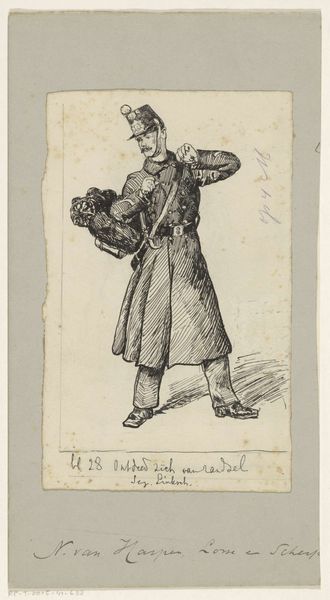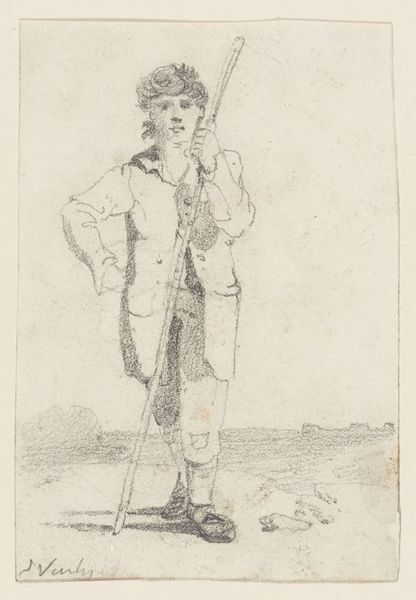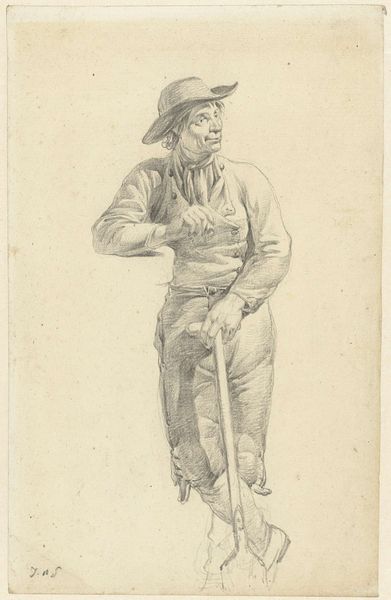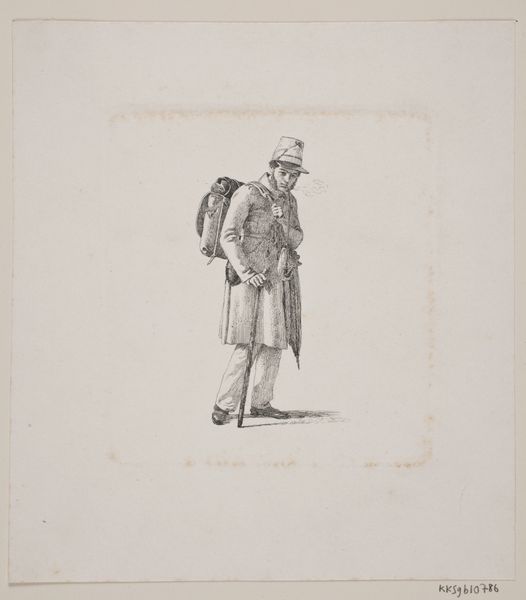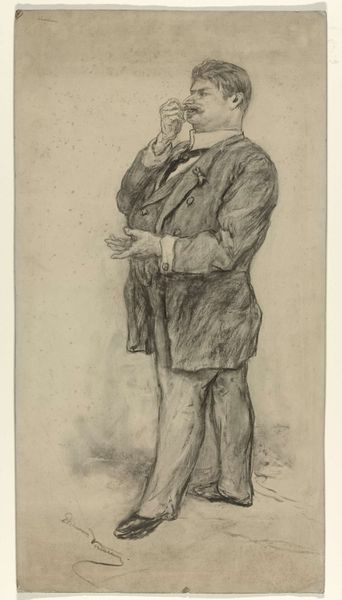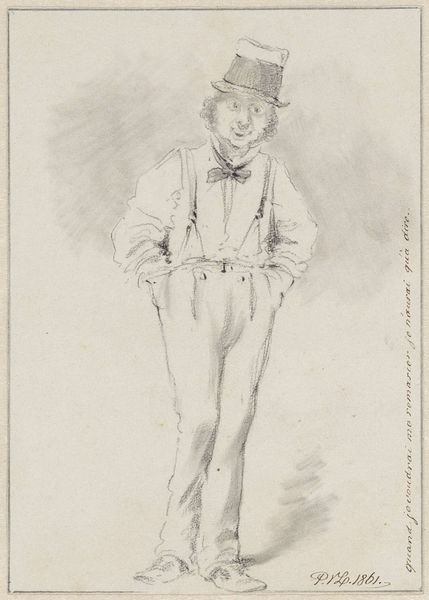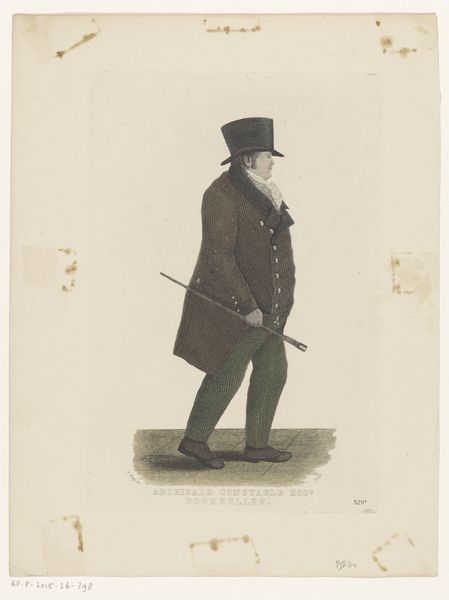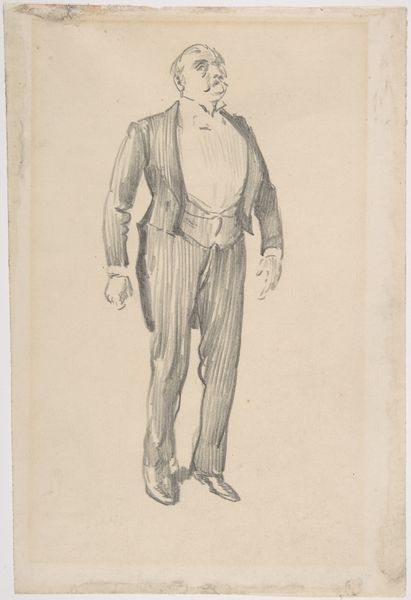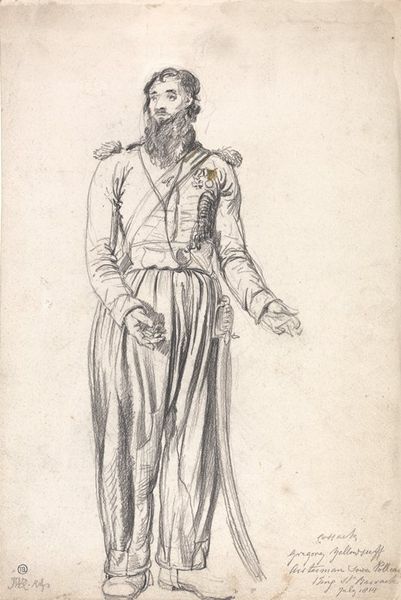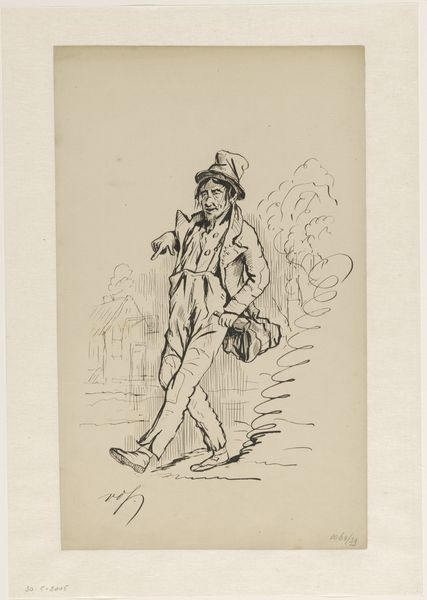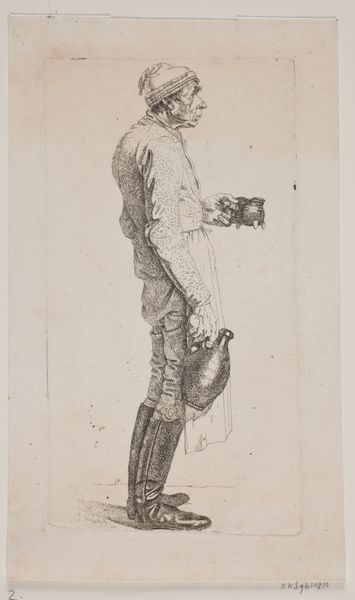
drawing, ink, pen
#
portrait
#
drawing
#
pencil sketch
#
figuration
#
ink
#
pen-ink sketch
#
sketchbook drawing
#
pen
#
academic-art
Dimensions: height 273 mm, width 206 mm
Copyright: Rijks Museum: Open Domain
Curator: Welcome. Here we have a pen and ink drawing from before 1898 by Heinrich M. Krabbé, titled "Jongeman probeert zijn kapotjas aan te trekken," which translates to "Young man trying to put on his tattered coat." It resides here at the Rijksmuseum. Editor: The stark lines against the plain background evoke a profound sense of vulnerability. There's an awkwardness to his stance; it's as though he is caught between identities, symbolized by the struggle with his coat. It really emphasizes the materiality of the garment itself, the wear and tear suggesting hardship. Curator: The artist has employed a classic academic art style with remarkable precision, effectively using hatching and cross-hatching techniques to create depth and volume in the figure. He seems to emphasize this academic-art style perhaps to juxtapose this approach with such a difficult and dejected scene and to reflect something beyond just the portrait itself. Editor: Indeed. Krabbé's piece acts as an insightful social commentary. By rendering the young man with such formal accuracy while emphasizing the evident poverty through his torn clothing, the drawing calls attention to class disparities and social precarity within the historical period. Curator: I agree. There's a narrative beyond just clothing issues; perhaps an early 19th-century reflection on changing industrial and social forces. The youth looks ill-prepared for work in such difficult conditions. Editor: Right, the art emphasizes the relationship with work, and how the most marginalized members of society find themselves struggling to prepare for difficult and unsafe conditions. Curator: This exploration really sheds light on how Krabbé navigated the role of an artist during times of societal upheaval. He offered reflections through observational pieces while highlighting those on the margins. Editor: Thinking about it, the artist captured the stark reality and created a lens to consider some ongoing societal challenges related to economics and labor. It's as relevant now as it was then. Curator: Well, considering this artwork helps bring the social impact of art into a modern context. It shows us how historical pieces, through both technique and topic, shape our comprehension. Editor: Yes, I see how art history helps understand the complexities in themes around identity and societal struggle. Thank you.
Comments
No comments
Be the first to comment and join the conversation on the ultimate creative platform.
